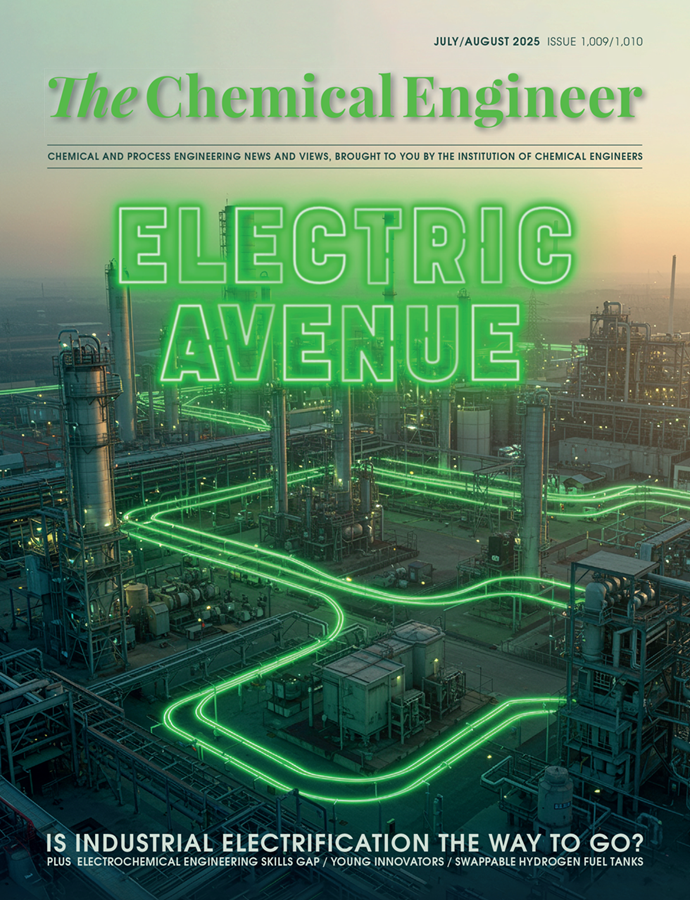Hydrogen ambitions meet real-world challenges at IChemE All Ireland Member Group workshop

IRELAND faces significant challenges before low-carbon “green” hydrogen can be integrated into its energy mix, according to leading experts from Irish academia and industry.
Chemical engineers and decarbonisation specialists recently convened to assess hydrogen’s potential benefits for the Irish economy, as well as the policy and cost-related hurdles involved in connecting it to the national energy grid.
With Ireland home to a diverse range of thriving industries – from pharmaceuticals and biotech to cement and heavy manufacturing – a workshop hosted by IChemE’s All Ireland Member Group (AIMG) at Queen’s University Belfast explored how hydrogen could impact sectors and regions across the country.
Cost challenges of hydrogen
Low-carbon hydrogen remains expensive to produce and would currently cost consumers more than conventional gas-powered electricity. Marcus Bishop, AIMG secretary, set the scene for the challenges hydrogen faces in decarbonising industry while keeping energy costs manageable.
Bishop said: “There is a cost gap between hydrogen and unabated fossil fuel that needs to be addressed, but that barrier is expected to get smaller over time as policy catches up.”
He emphasised that policy is the key lever for reducing costs and enabling large-scale hydrogen projects to move forward. Many initiatives around the world remain in limbo due to financial uncertainty but Bishop pointed to growing momentum as governments begin to align regulatory frameworks with climate goals.
Bishop described the initiative as being about as close to a “mega project” as a country can get with hydrogen, potentially linked to Ireland’s traditional expertise in processing natural gas to produce “blue” hydrogen – where carbon capture is used to mitigate emissions. He raised the question of whether Ireland should adopt a similar approach for its own hydrogen projects.

Integrating hydrogen
The Climate Change Committee’s Hydrogen 2040 report states that hydrogen will ultimately play a “small but important” role in decarbonising industries with limited alternatives – such as ceramics and chemical production. Green hydrogen will remain a costly fuel to produce, as it relies on electricity to power electrolysers and the associated infrastructure needed for generation.
David Rooney, dean for the Faculty of Engineering and Physical at QUB, said: “If Ireland wants to be competitive in the global hydrogen market, we need to start thinking differently about how we use hydrogen.”
Rooney noted that while green hydrogen may not currently be the most economically viable power source for Ireland, future supply chains and system integration could create new demand.
He outlined how hydrogen could be incorporated into existing infrastructure in Ireland – particularly heating and electricity networks – and go beyond energy production. One example is the oxygen generated as a byproduct during hydrogen production, which Rooney suggests could be repurposed for water treatment processes. He also highlighted the potential for synergy in the AgriTech sector, especially through the production of methanol – made using hydrogen – which can be used to develop fertilisers for crops.
He said: “We need to look at how we can maximise the value and connect all the industries together to find how hydrogen can add to existing supply chains.”
Hydrogen use now
Taking Rooney’s approach, Northern Ireland-based cement manufacturer Mannok is looking to achieve circularity through the production of green hydrogen for its “Mannok Energy Valley” project.
Paul Monaghan, the group head of sustainability for Mannok, said: “Though there are challenges to developing hydrogen, Mannok has its own materials, we are in a high wind yield region, we have a well-developed sustainability strategy and interest from our investors.”
He adds: “In phase 1 of our project, we are looking to use wind power already generated from our existing 54 MW wind farm to generate large-scale hydrogen and oxygen.”
Producing green hydrogen will allow the company to reduce its diesel usage by around 4m t/y. Currently, diesel is used to power its fleet of 150 heavy goods vehicles. Additionally, Mannok intends to use the oxygen from the hydrogen in the manufacturing process of its cement. This approach, the company says, will allow them to reach the target of net zero by 2040.
Monaghan said that due to Ireland’s geographical advantages, the country should push for large-scale green hydrogen projects as soon as possible, saying that Mannok has positioned itself as an enabler of an Ireland energy transition.
He said: “There is potential for a diverse set of green energy off-takers in this region that can allow us to decarbonise at pace and scale and we cannot wait for policy to catch up.”
Recent Editions
Catch up on the latest news, views and jobs from The Chemical Engineer. Below are the four latest issues. View a wider selection of the archive from within the Magazine section of this site.




